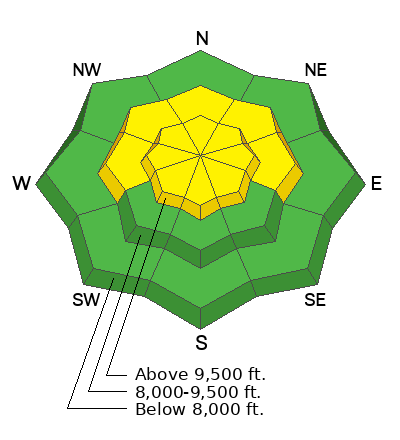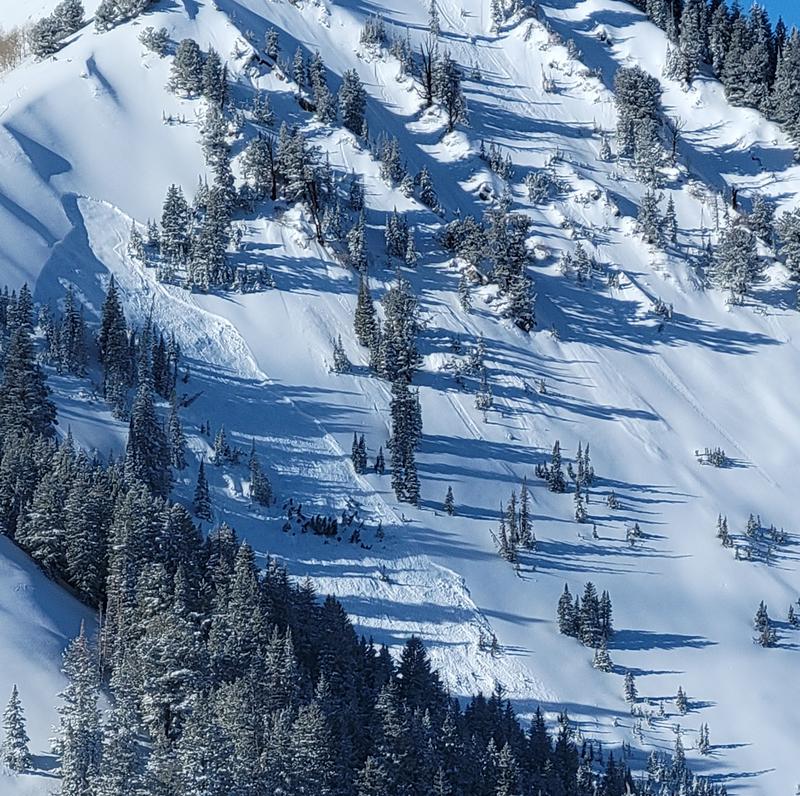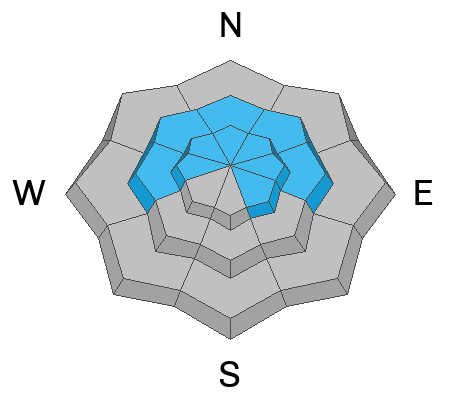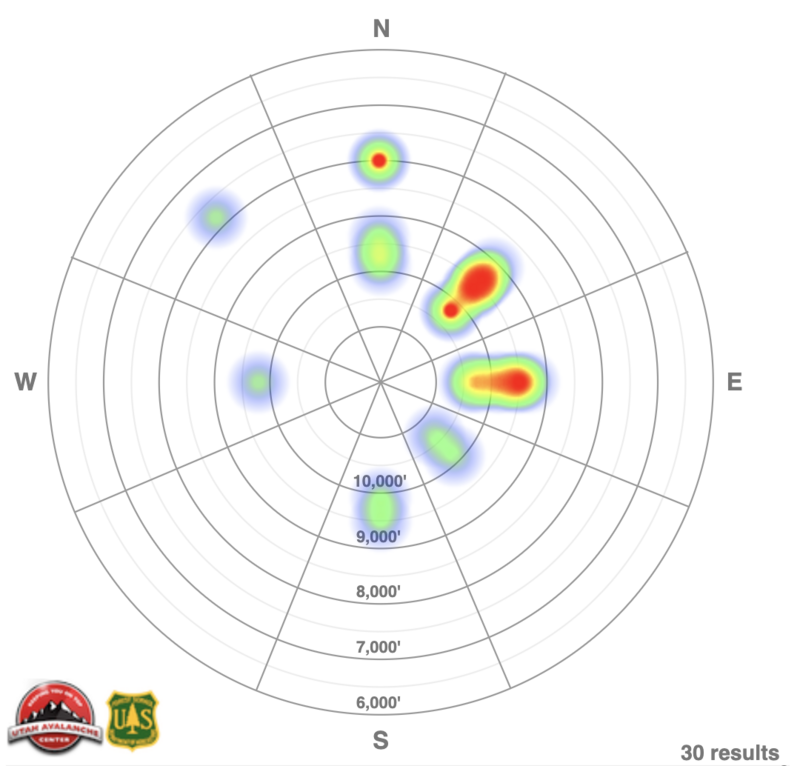Skies are partly cloudy. Mountain temperatures are in the mid to upper 20s. Winds are from the west-northwest, blowing 15mph with gusts to 25. The highest elevations have wind speeds of 25-30mph with gusts to 35.
The snow surface conditions are starting to show a little wear and tear from the last two days of sun and wind. Still, riding conditions remain excellent in sheltered terrain. Snow depths are 2-3' along the Park City ridgeline and 3-5' in the upper Cottonwoods.
For today, we'll have partly cloudy skies and perhaps near Logan a wayward snowflake or two by a weak system passing through. Don't complain, though, those flakes may be all we see for the next week or so. Temps will be in the upper 20s to low 30s; winds will be light from the west.
The Outlook: fairly grim. Plenty of sun, seasonal to above seasonal temps, and light wind. Mike Seaman, the lead meteorologist this morning at the National Weather Service, describes Utah as moving into the "No-Flow-Zone". In other words, we're in limbo between the main storm track to the north and a weak system that dives to the south. I might be grasping at straws here, but perhaps we'll see a pattern change around the Solstice.
The Good News: backcountry travel is easy, riding conditions will remain decent in the sheltered terrain, and avalanche conditions will improve.
Forecaster Dave Kelly noted a new natural soft slab avalanche (wind drifted snow) on a steep northeast facing slope of Rocky Point (between Alta and Brighton). It was estimated to be 2' deep and 70' wide. Ski area control work did not produce any avalanches and we didn't hear about any other avalanches in the backcountry.
On Saturday, however, a backcountry party remotely triggered (at a distance from the ridgeline) a two foot deep and 125' wide soft slab in Wilson Fork in upper Mill Creek (Ambler pic below). This avalanche broke on our old weak faceted snow from early season on a steep northeast facing slope at 9600'. My own touring party experienced three large collapses along the Wilson ridgeline above the avalanche yesterday, but these did not trigger anything.









